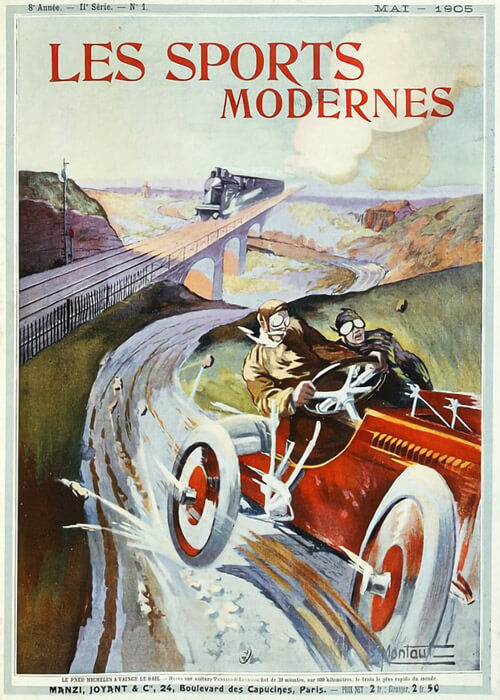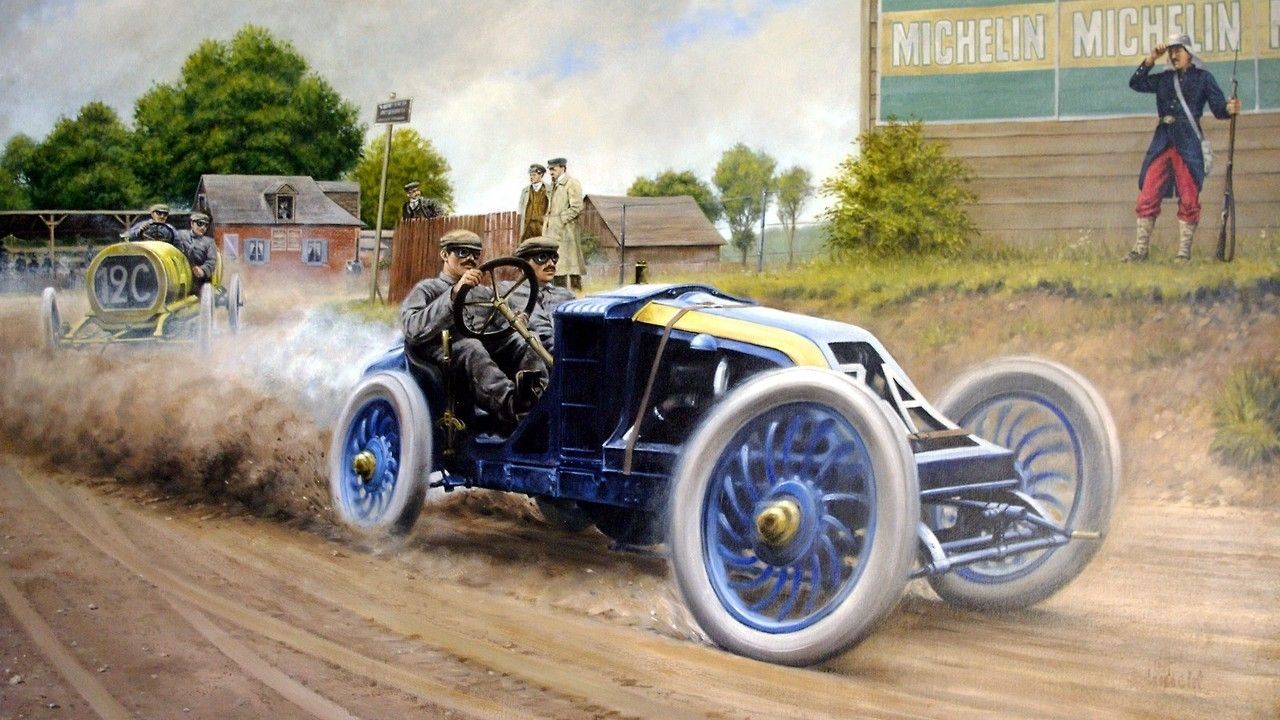Grand Prix
After the Gordon Bennet Cup came to an end in 1905, the Automobile Club de France l’ACF, organised the following race events according to their preferences. No more limitations of three participating cars per nation and the likes.
In 1906 the first Grand Prix de l’ACF was held on the Sathe track. It’s situated in the vicinity of the later La Mans track. Part of the course required wooden planking, as the ground was marshy. The winner of the 1906 Grand Prix de l’ACF was Szisz on a Renault. He won the race, not only by his driving capacities and not only by the good car (a Renault), but because of his car being equipped with detachable wheel rims; the so called “jantes amovibles” of Michelin. Remember that Michelin also was the first with a technical innovation of pneumatic tyres in the 1895 Paris-Bordeaux race. The 1906 detachable rims enabled much shorter pits stops than with the then current wheels. As is still today, tyres were the determining factor in a race. As all cars needed several tyre changes during a race, detachable rims gave a dominant time advantage in the race. Even when in those days, GP’s lasted two days!
The 1912 Grand Pric de l’ACF was won by Boillot and Goux second on the historical Peugeot race car with his four-valve, overhead twin-cam engine and hemispherical combustion chamber. An engine that would set design standards for over more than one decade.
The 1914 Grand Prix saw a fierce battle between Peugeot and the challenging Mercedes cars. The race was decided by the Mercedes team, that dominated mostly by fine racing team tactics. It was all in the wake of the First World War, bringing rage and destruction over Europe, just a month later.
In 1921, the first post-World War French Grand Prix was organised and an American car and driver won, indicating the change that had taken place in the meantime.
From the mid 1920’s on, more and more countries, such as Italy (Monza), Belgium (Francorchamps) and germany (Avus and Nürburgring) joined the Grand Prix scene in organising their own Grands Prix.More and more, new technologies, such as turbochargers, front drive and low air resistance chassis were introduced.
Finally, European Grand Prix races grew into a race series, that would stand the test of time and is still alive and kicking till today.
Excellent read on the development of Grand Prix racing, in comparison to American racing for the first quartrer of the twentieth century, gives the book „Auto Racing Comes of Age“ by Robert Dick.
Interesting and extensive information can also be found on the website: „The Golden Era of Grand Prix Racing“ goldenera.fi







